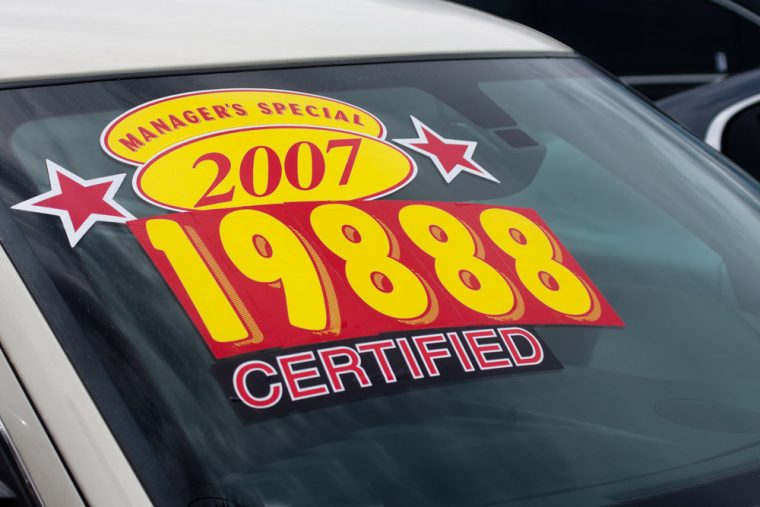
If you’ve ever bought or sold a used car, chances are you looked at Kelley Blue Book before money exchanged hands to make sure you were getting a fair price. Kelley Blue Book, which has been around since 1926, is widely used in the U.S. to determine the value of a used car, but how does it actually measure the value of a used car?
Before telling you how much a used car is worth, KBB looks at real sales figures from auctions, dealership sales, private party sales, rental fleets, carmakers, and lessors. It then uses this information to give you a good idea of value in one of four different categories: private-party value, trade-in value, suggested retail value, and certified pre-owned value.
Shop, Click, Drive: Learn how you can take the hassle out of car shopping

If you’re trying to get rid of a used car, you’ll need to pay attention to the trade-in value and the private-party value. Trading in your car usually gets you less, but it is often the more convenient route if you’re already planning to purchase a replacement vehicle from a car dealership. Going the private-party route might get you more money upfront, but you’ll have to deal with the logistics of getting the car to the new owner and transferring titles.
KBB’s algorithm looks at real data from used car sellers for your year, make, and model to determine a fair price. You can print out the results and take it to the dealership to make trading in your car easier, or use it as evidence of why your car is worth a certain amount if you’re selling privately.
If you’re in the used-car market, you’ll want to make sure you’re getting a good deal. KBB analyzes data from car manufacturers and dealerships and tells you what the car you have your eye on is worth. You can use that data to negotiate a lower price on a car you’re interested in but that is priced higher than recommended by KBB. Of course, there’s no guarantee the seller will agree to your offer, but having it in writing from a trusted source like KBB at least backs up where you got your information from.
Maintenance 101: How to take care of your tires for better resale value

Like any algorithm, KBB’s has its drawbacks. Since KBB collects data from so many sources, there can often be a lag between its reported values and the current market. KBB might suggest a higher value for your used car, whereas demand for that car might have decreased from the time the data was gathered.
KBB’s algorithm doesn’t take subjectivity into account. You might think your car is in good condition, but by KBB’s standards it might be considered only marginal condition and will therefore fetch a lower price.
For trade-in values, many auto dealerships prefer to rely on data from other sources that are unavailable to the public. Your quote from KBB will quite possibly be higher than the quote your dealership sourced, so your expectations might be too high for trade-in.
Regardless of its downsides, Kelley Blue Book remains one of the most trusted sources when it comes to calculating used car value. However, the eventual price you pay for a car or get for selling your car could be very different from KBB’s recommendation depending on your location, market demand, the condition of your car, and how amenable you are to offers.
Catherine Hiles (she/her) is a native Brit living and working in Dayton, Ohio. Cat has written about a variety of subjects, including finance, cars, and parenting. She is a frequent contributor to Dayton Mom Collective, The Penny Hoarder, and WDW Magazine.
Cat lives with her husband, their two kids, and their energetic pitbull mix. She counts running, lifting weights, walking, and reading among her hobbies. See more articles by Cat.



